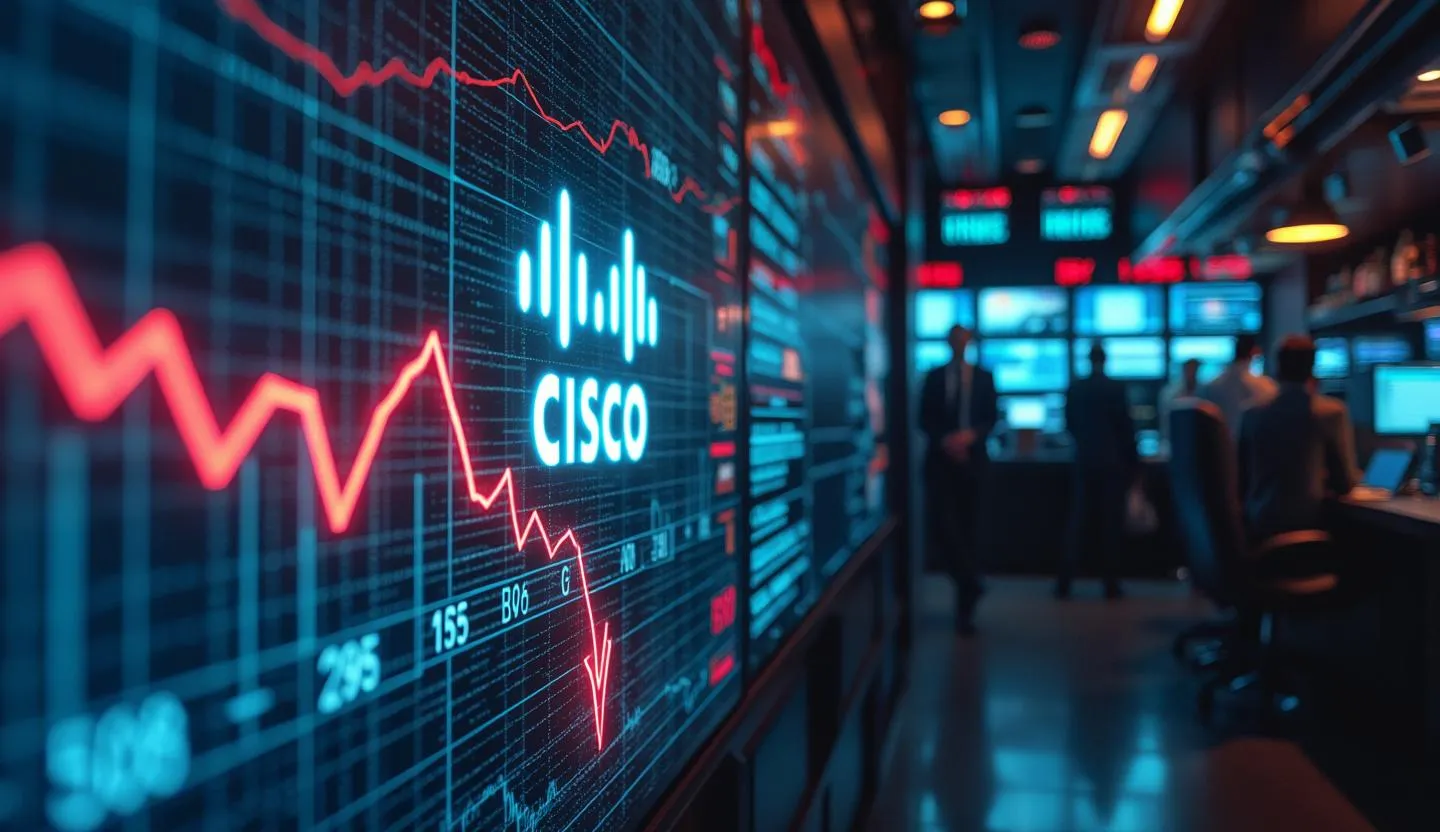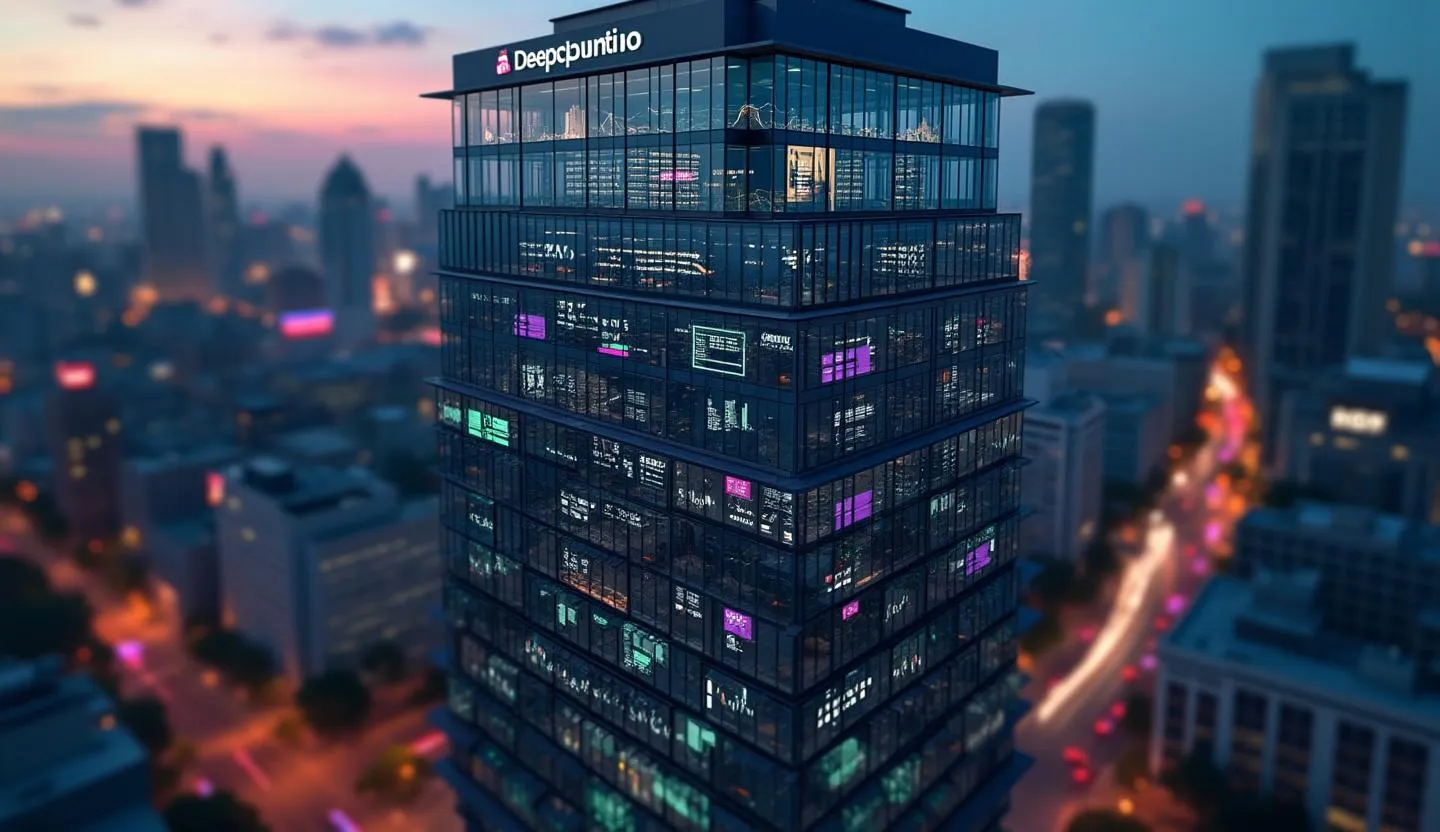A Bellwether Falters: Cisco’s Slide Highlights Broader Tech Weakness
In today’s trading session, few names have illustrated the market’s shifting sentiment toward technology hardware like Cisco Systems, Inc. (CSCO). Long hailed as a barometer for enterprise IT spending and global digital infrastructure, Cisco’s shares are down sharply after a decisive analyst downgrade, raising questions about the durability of the sector’s recent rally. As the market heads toward the closing bell, Cisco's abrupt decline makes it a key underperformer among large-cap tech, with implications that ripple far beyond its own order books.
Key Takeaways
Cisco shares fell 4.44% to $66.15 in heavy trading (29.8 million shares), underperforming the broader market.
HSBC downgraded Cisco from “Buy” to “Hold,” cutting the price target to $69 from $73, citing waning momentum from the recent restocking cycle.
Volume spiked well above normal, a sign of institutional repositioning in response to the downgrade and broader sector jitters.
Recent news coverage underscores mounting concerns about slowing demand for networking hardware and a cooling cycle for IT infrastructure spend.
Cisco’s Core: The Digital Plumbing of the Modern World
Founded in 1984 and headquartered in San Jose, California, Cisco has long been synonymous with networking gear—routers, switches, cybersecurity solutions, and software that power the backbone of global enterprise and internet operations. As a leading supplier to corporations, governments, and telecoms, Cisco’s quarterly results and outlooks are closely followed as a proxy for capital expenditure in the broader technology sector.
Performance in Focus: Downgrade Triggers Sharp Selloff
A Sudden Shift in Sentiment
As of the latest session, Cisco’s shares are down 4.44%, trading at $66.15—significantly below their prior close of $69.30. The selloff comes on the heels of an HSBC downgrade that not only shifted the rating from Buy to Hold but also lowered the price target to $69, highlighting skepticism about Cisco’s near-term growth prospects.
Trading volume surged to nearly 30 million shares, well above average, suggesting that the market is rapidly repricing expectations for both Cisco and the broader enterprise hardware cohort.
Historical Performance: From Recovery to Reversal
While Cisco stock had recovered steadily from mid-cycle lows, today’s drop erases much of the recent upside, taking the price well below short-term moving averages and raising technical concerns. The selloff marks one of the steeper single-day declines for Cisco in recent months, underlining the market’s sensitivity to changes in analyst sentiment for sector leaders.
Analyst Action: HSBC’s Red Flag on the Restocking Cycle
The immediate catalyst for today’s volatility was HSBC’s downgrade, which cited concerns that the restocking boost—an industry-wide phenomenon as IT buyers raced to replenish depleted inventories post-pandemic—has largely played out. In the words of the Invezz report:
“Cisco Systems’ shares fell more than 2% on Friday after HSBC downgraded the networking equipment maker from ‘buy’ to ‘hold’, citing concerns that the company’s recent restocking boost is losing steam. The bank also lowered its price target to $69 per share from $73, implying a modest 0.4% downside from Thursday’s close.” (Invezz, Aug 15, 2025)
This downgrade is particularly notable given Cisco’s longstanding position as a relative safe haven among tech hardware stocks. The restocking cycle had provided a much-needed tailwind as supply chains normalized, but HSBC’s cautious tone suggests further upside may be constrained by slower order flow and more cautious customer budgets.
Market Context: IT Spending Headwinds and Sector Volatility
Broader Technology Sector Jitters
Cisco’s decline comes amid a day of sector-wide reappraisal, with other tech hardware names also under pressure. The downgrade, combined with the broader market’s risk-off tone, has contributed to a notable rotation out of cyclical tech and into defensive sectors.
Recent News Coverage and Expert Commentary
A CNBC Television segment, “Calls of the Day: Target, Salesforce and Cisco,” highlighted the Investment Committee’s debate over whether Cisco’s recent performance can hold up in the face of macroeconomic uncertainty. Meanwhile, Schwab Network’s morning recap notes that:
“All A.I. trade developments moving markets Friday morning.”
This underscores how sector leadership is shifting rapidly, with investor focus pivoting from traditional infrastructure plays like Cisco to higher-growth areas such as AI and cloud-native platforms.
The Restocking Cycle: A Double-Edged Sword
The pandemic’s supply chain disruptions led to a historic restocking binge across the tech sector, driving above-trend growth for hardware providers. Now, as inventories normalize and incremental demand softens, companies like Cisco face a more challenging environment. The market’s reaction today suggests that the tailwinds from this cycle may have run their course, at least for now.
Looking Forward: Implications for Investors
Today’s action in Cisco Systems is a stark reminder of how quickly sector sentiment can turn when the narrative shifts from recovery to normalization. The HSBC downgrade, amplified by above-average trading volume and a decisive price break, signals that investors are reassessing risk across the entire tech hardware landscape.
Cisco’s decline offers several takeaways:
Analyst downgrades, especially from major global banks, can serve as key inflection points for sector sentiment.
Heavy trading volume on a downgrade suggests institutional repositioning and may foreshadow further volatility.
The fading of the restocking cycle means investors should scrutinize forward guidance and order trends when evaluating tech hardware stocks.
While Cisco remains an essential player in global digital infrastructure, today’s selloff highlights the importance of monitoring both macro and company-specific catalysts. As the market approaches the close, the debate is no longer about whether the restocking cycle is over—but what comes next for tech’s old guard.

.svg)
.svg)
.svg)
.svg)

.svg)

.svg)
















